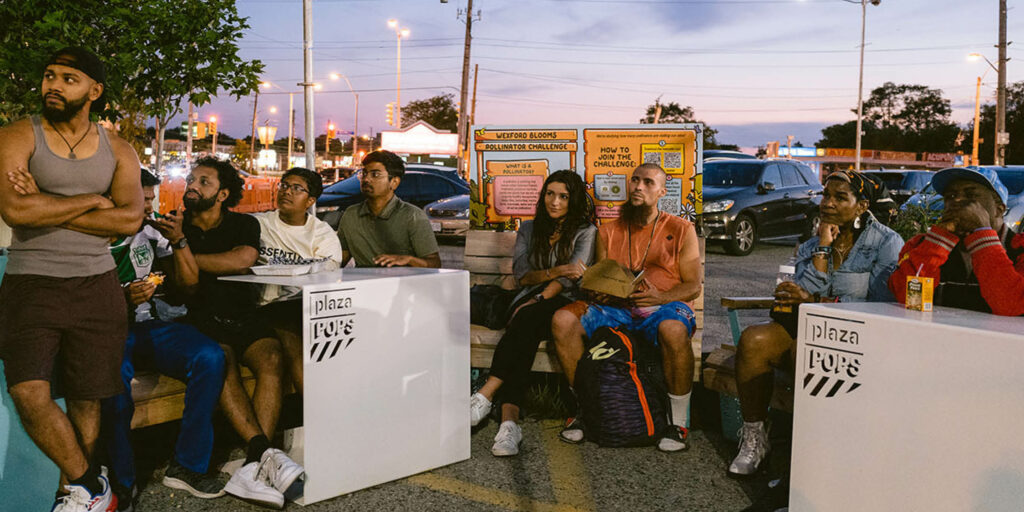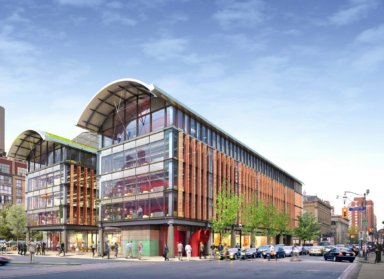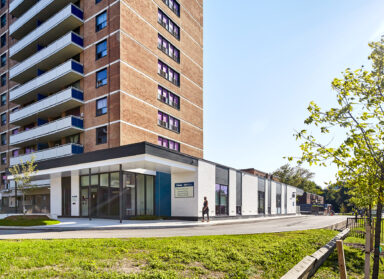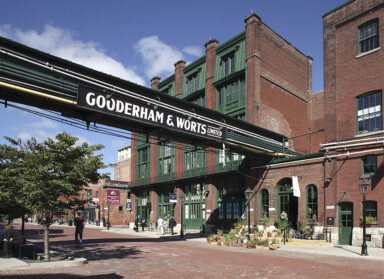ERA is excited to welcome Daniel Rotsztain as the firm’s first Artist-in-Residence. Known as the Urban Geographer, Daniel is a Toronto-based illustrator, writer, and community activator who contributes to urbanist discourses, practices, and modes of thinking in a variety of ways. He received a master’s degree in landscape architecture from the University of Guelph and has been co-leading plazaPOPS with ERA collaborator Brendan Stewart since 2018.
ERA writer-researcher Alessandro Tersigni chatted with Daniel about illustration as a form of visual commentary, conserving heritage uses, and the complexities of Toronto’s suburbs.
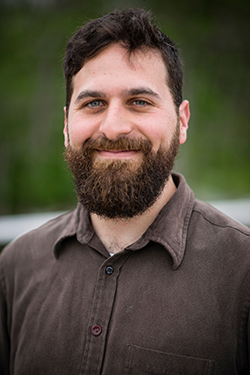
Alessandro Tersigni: Why do you think illustration is important at a place like ERA and how will you channel that as Artist-in-Residence?
Daniel Rotsztain: A clear diagram or illustration has a big communicative impact. That has to do with its reduction of complexity. Every map has an argument embedded in it because it’s necessarily a simplification of reality that directs the viewer’s focus to a particular set of phenomena, which is an approach I’ve tried to transfer to illustration and cultivate for many years. We’re so inundated with information and images these days and photos have become easy to skip over because they don’t simplify. In that sense, illustration does a lot of heavy lifting that photography and other media don’t do.
AT: Is there anything specific you’re excited to tackle in your new role?
DR: I’ve always loved ERA’s cultural landscape projects: the missing middle, University Park, Tower Renewal—anything that’s an invitation to think differently about the spaces right under our noses. Those projects often revolve around asking the question “Have you considered?” in the most effective way possible. That’s something that ERA is really is strong at and I think illustrations are the perfect tool to support it. Whatever team needs a drawing should tap on my shoulder.
AT: How does heritage fit into your approach to urbanism and city-building?
DR: I’m most interested in heritage conversation that’s about living culture, as opposed to built form. I guess that’s sort of the frontier of the field. For example, take any beloved bookshop. Of course we love the old quality of stacked books and rickety shelves. That’s a condition that was created over years of accumulation and we got used to it. But the book shop as a community centre doesn’t need a specific type of building or storefront necessarily. There’s an organic quality to urban spaces that allows for these things, but if you’re in a position to be intentional about it, you can stage uses almost independently of place. The St. Lawrence Market has been in a tent for the last seven years and it’s still the market. It will move into a fancy new building and that won’t change. But, arguably, if you turned the St. Lawrence Market building into a residential building, what good would it be if you didn’t have access to it?
AT: What kind of built geography did you come of age in and how did it shape your current ideas and passions?
DR: I love sharing my geography origin story. I’ve been teaching at the University of Toronto and at the beginning of courses I’ll get students to talk about the landscapes they grew up in and how that moulded their perspectives, especially of the suburbs. I grew up at Bathurst and Eglinton in Toronto. At the time, I thought it was the suburbs, but then I met kids in high school who grew up in the real suburbs and realized that my angst couldn’t hold a candle to theirs. I guess where we lived sort of bridges the Old City of Toronto with the more suburban landscapes to the north. We did a lot of errands up at Bathurst and Lawrence at the Jewish strip malls and bakeries and plazas. I’ve always had a warm relationship with those streetscapes, despite the urban planning doctrine that high-density urbanism is the only legitimate form.
AT: As someone who’s working on suburban activation, can you complicate that doctrine?
DR: I think we get confused by aesthetics. We think certain forms produce a certain use or spirit. By dismissing car-oriented suburbia—which of course has legitimate justifications, like the climate crisis, social isolation, etc.—we forget to look a little more deeply and carefully at places that may appear suburban but are actually operating in a much more urban way. The GTA’s suburbs are special because they’re denser and have more of a mixed-use character than those of other Canadian cities. Things like high concentrations of small businesses, mighty bus systems, and critical masses of people give our suburbs a bit more of that Jane Jacobs sidewalk ballet than you might think.
AT: Is there any sense in which the stereotypical suburban aspects of those areas, not the ones that are secretly urban, are themselves positive?
DR: I don’t want to pretend that all forms of suburban development are great or that we should envy or aspire to them. There’s certainly a deep sprawl of houses in the GTA where you have to drive three hours to your job. That said, a lot of the classic criticisms of suburbs are amplified by particular perspectives and biases and desires, like my own. I sponsored a refugee’s move to Canada a couple years ago and we were like, “Come live downtown. Be near us!” But he just kept sending us pictures of Richmond Hill. There’s definitely value in the human desire for air and light and greenery—I don’t think that’s problematic. The problem is when a city is overextended and can’t service itself and is untenably expensive. It’s been said that the suburbs were supposed to be the best of both the city and the country, but ended up being the worst of each. That vision isn’t necessarily lost, especially as we electrify vehicles and invest in new transit. There’s a suburban dream that’s salvageable.
